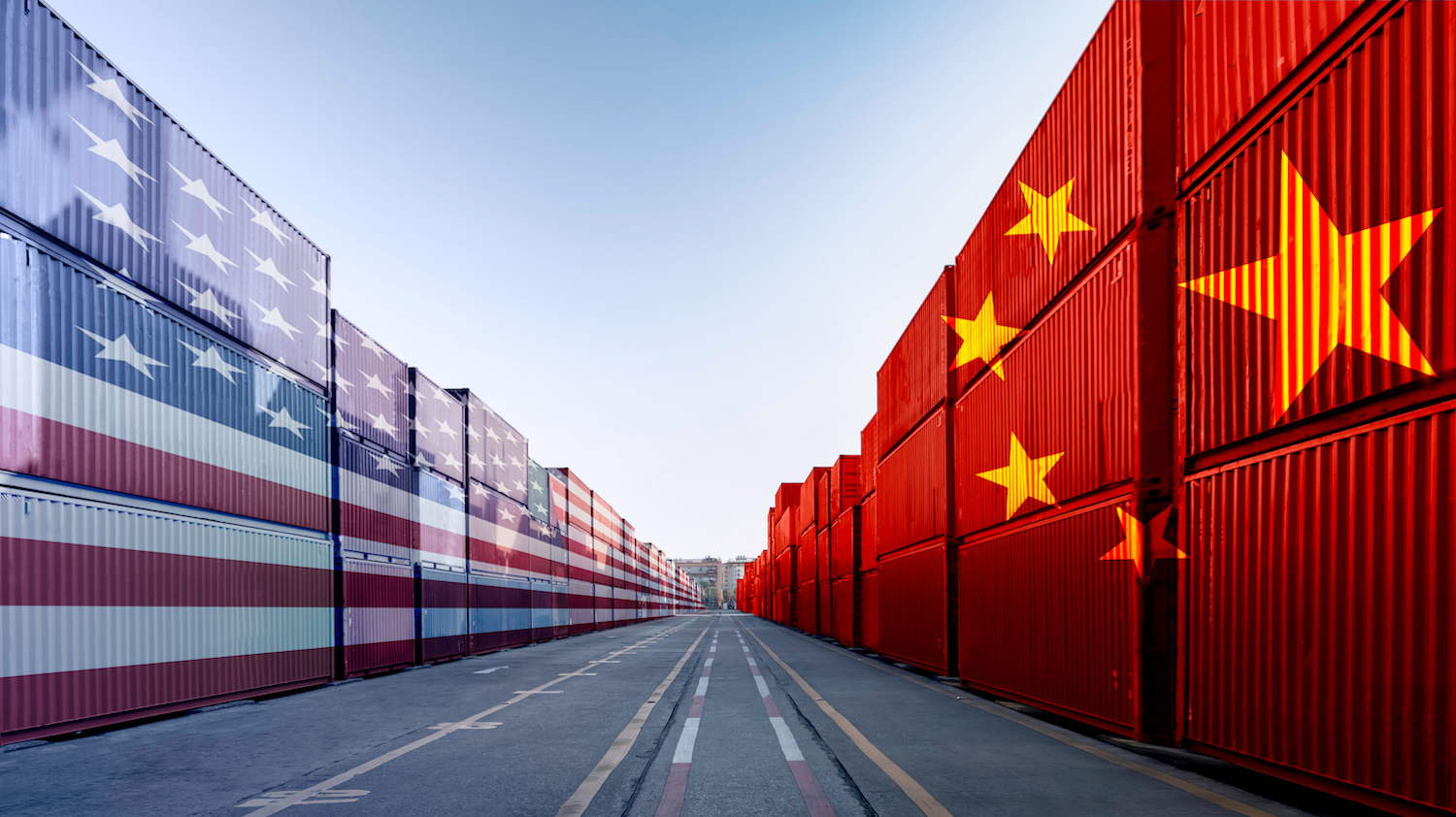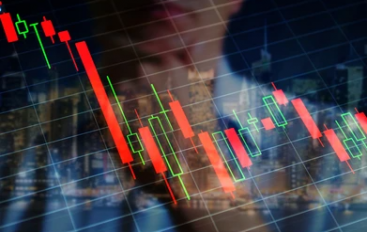In a world more connected than ever, it’s ironic that economic borders are hardening again. The East–West divide, once frozen under the Cold War’s Iron Curtain, has returned—not with tanks, but tariffs; not with missiles, but market sanctions. And while global powerhouses in Washington, Brussels, Beijing, and Moscow strategize over security and economic supremacy, the world’s most fragile states—places already battered by conflict, climate shocks, and corruption—are watching their futures collapse under the weight of other people’s trade wars. Discover how rising trade wars and Cold War II dynamics are deepening poverty in fragile states, disrupting development aid, and how the World Bank must pivot to protect the world’s most vulnerable.
It’s not just about macroeconomics anymore. These tensions are upending aid, cutting off supply chains, and destabilizing development in the very places that need the most support.
Take a closer look, and you’ll find that the global trading system—once the engine that lifted over a billion people out of poverty—is now increasingly driving people deeper into it. The question is urgent: How should institutions like the World Bank respond when global trade is no longer a force for inclusion but a source of fragmentation?
In this blog, we’ll explore:
- How Cold War II dynamics are reshaping global trade
- The rising poverty toll in fragile and conflict-affected states
- World Bank insights and case studies from real-world crises
- What must change to insulate development from geopolitics
Let’s begin by understanding the scale of the shift—and who’s being left behind.
Cold War II and the Geopolitics of Trade Wars
The global economy is splintering into camps.
Since 2018, tensions between the U.S. and China have evolved from tariff disputes to full-blown technological and strategic decoupling. Western countries are increasingly adopting “friend-shoring” strategies—sourcing goods only from allies—while China and Russia deepen bilateral ties and push for de-dollarization and multipolar trade ecosystems.
This reorganization of trade has profound implications for developing nations, especially those already labeled Fragile and Conflict-Affected Situations (FCS) by the World Bank. These states often lack economic resilience, depend on a few export products, and rely heavily on foreign aid, much of which flows through channels now being disrupted by East–West hostilities.
Key trade fractures in numbers:
- World Bank’s 2024 Global Economic Prospects forecasts a 5–7% reduction in global output if geopolitical fragmentation deepens.
- The average GDP growth in fragile states fell to just 1.2% in 2023, compared to 4.2% in developing economies.
- Food price inflation in conflict zones like Syria, Sudan, and Yemen surged by over 50% after trade restrictions and supply chain shocks linked to sanctions and war.
These numbers aren’t just statistics—they represent real human suffering, lost livelihoods, and shrinking hope in places where life is already lived on the margins.
When Trade Wars Hit the Poorest: On-the-Ground Impacts
It’s easy to think of trade wars as something that affects stock markets or high-level diplomacy. But in fragile states, the effects are visceral and immediate.
Sudan: Conflict Meets Cutoff
After conflict reignited in 2023, Sudan’s economic isolation deepened. Sanctions imposed by Western powers aimed at undermining the military junta have blocked aid pipelines, disrupted trade routes with Egypt and Ethiopia, and prevented international financial institutions from engaging with local banks. The result? Over 20 million people are now food insecure, according to the UN.
Afghanistan: Trade as a Lifeline—Now Strangled
Following the Taliban’s return to power in 2021, most international trade halted. Foreign reserves were frozen, and aid agencies faced legal barriers to engagement. With limited export options—mainly carpets, saffron, and fruits—Afghanistan saw a 60% drop in exports in 2022. Poverty has now reached over 90% of the population, per World Bank estimates.
Haiti: Collateral Damage of U.S.–China Disruptions
Haiti imports nearly all its fuel, food staples, and medicine. As container shipping costs soared during the COVID-19 pandemic and U.S.–China port restrictions carried over into 2023, Haiti’s economy—already teetering due to political instability—was pushed further toward collapse. Food shortages and currency depreciation are now triggering the worst humanitarian crisis in over a decade.
These are just a few snapshots of how fragile economies—already weakened by war or internal dysfunction—are now collapsing under the weight of global mistrust.
World Bank Response: Between Principles and Pragmatism
The World Bank plays a critical role in fragile states, providing over $37 billion annually in concessional finance and technical assistance to countries in crisis. Yet its model is increasingly under strain.
Why?
- Its disbursement channels rely on access to global financial systems, now politicized.
- Its policy framework demands accountability and anti-corruption—difficult in politically contested regimes.
- Its core assumption—that trade is a pathway to stability—is being tested like never before.
In its Fragility, Conflict, and Violence (FCV) Strategy, the Bank acknowledges that “geopolitical shocks are increasingly intersecting with local fragility, creating compound crises.” But even this evolving doctrine may be outdated in the face of new Cold War dynamics.
To stay relevant, the World Bank must pivot from being a purely technical lender to a geopolitical navigator—able to operate in divided worlds while keeping people-centered development as its compass.
Case Study Rewind: Trade as a Cold War Casualty
Looking back helps make sense of today’s challenges.
Cuba (1960s–1990s)
After aligning with the Soviet Union, Cuba became the target of one of the longest-running trade embargoes in history. Development stagnated for decades, and the population endured chronic shortages. Even today, U.S. restrictions impact the flow of medicine, energy, and financial aid.
Ethiopia (1974–1991)
During the Derg military regime, Ethiopia’s alignment with the USSR isolated it from Western aid and trade. Despite massive food insecurity and droughts, Cold War tensions delayed effective international intervention until millions were already at risk.
These examples show that when global rivalry dictates trade relationships, fragile populations are often the collateral damage.
The Role of Aid in a Fragmenting Trade System
With traditional trade mechanisms failing, aid becomes even more crucial. But it, too, is being politicized.
- Humanitarian exemptions often fail in practice due to overcompliance by banks afraid of sanctions.
- Dual-use restrictions block even non-lethal goods from entering sanctioned states.
- Donor fatigue is rising, with OECD aid declining 3% in real terms in 2023, despite growing needs.
This is why new aid models are urgently needed:
- Decentralized delivery systems using local actors to bypass blocked governments
- Digital aid infrastructure using blockchain to ensure transparency in conflict zones
- South–South partnerships where middle-income countries provide aid to their fragile neighbors
Without these innovations, fragile states risk becoming the forgotten battlegrounds of global economic rivalry.
What Needs to Change: Policy and System Recommendations
To protect fragile countries from the fallout of trade wars and Cold War-style divisions, multilateral development institutions need to lead with adaptive, resilient, and context-specific strategies.
World Bank must:
- Develop Fragility-Proof Trade Finance: Create special mechanisms to maintain trade flows for essential goods in conflict zones, regardless of sanctions or decoupling trends.
- Invest in Regional Resilience: Build infrastructure and supply chains that link fragile states with regional markets, not just global ones. This insulates them from distant conflicts.
- Recalibrate Risk Appetite: Work with partners like the UN and regional development banks to fund projects in politically risky environments—because fragility is often where the need is greatest.
- Amplify Local Voices: Empower local civil society and businesses to shape development priorities, rather than rely solely on central governments that may lack legitimacy.
- Champion Neutral Platforms: Establish trade and development forums that are neutral and inclusive, insulating them from geopolitical agendas.
Conclusion:
The great irony of our era is that trade—once the engine of peace—is becoming a tool of power again.
In this new world of sanctions, tariffs, and strategic blocs, it is the poor and vulnerable who face the greatest risk. Fragile states can’t afford to choose sides in a global rivalry. They need access, assistance, and autonomy.
As Mattias Knutsson, a global procurement strategist deeply involved in humanitarian logistics, aptly puts it:
“Trade should never be used as leverage against the vulnerable. Development must stay rooted in people—not in politics.”
The World Bank, along with other global institutions, stands at a crossroads. It can continue operating as though global integration is inevitable—or it can step into this fractured world with a renewed mission: to make sure trade lifts up even the most fragile, even in the most divided of times.
Because when the world’s poorest suffer because of someone else’s war, we all lose something far more valuable than economic output—we lose our collective humanity.





